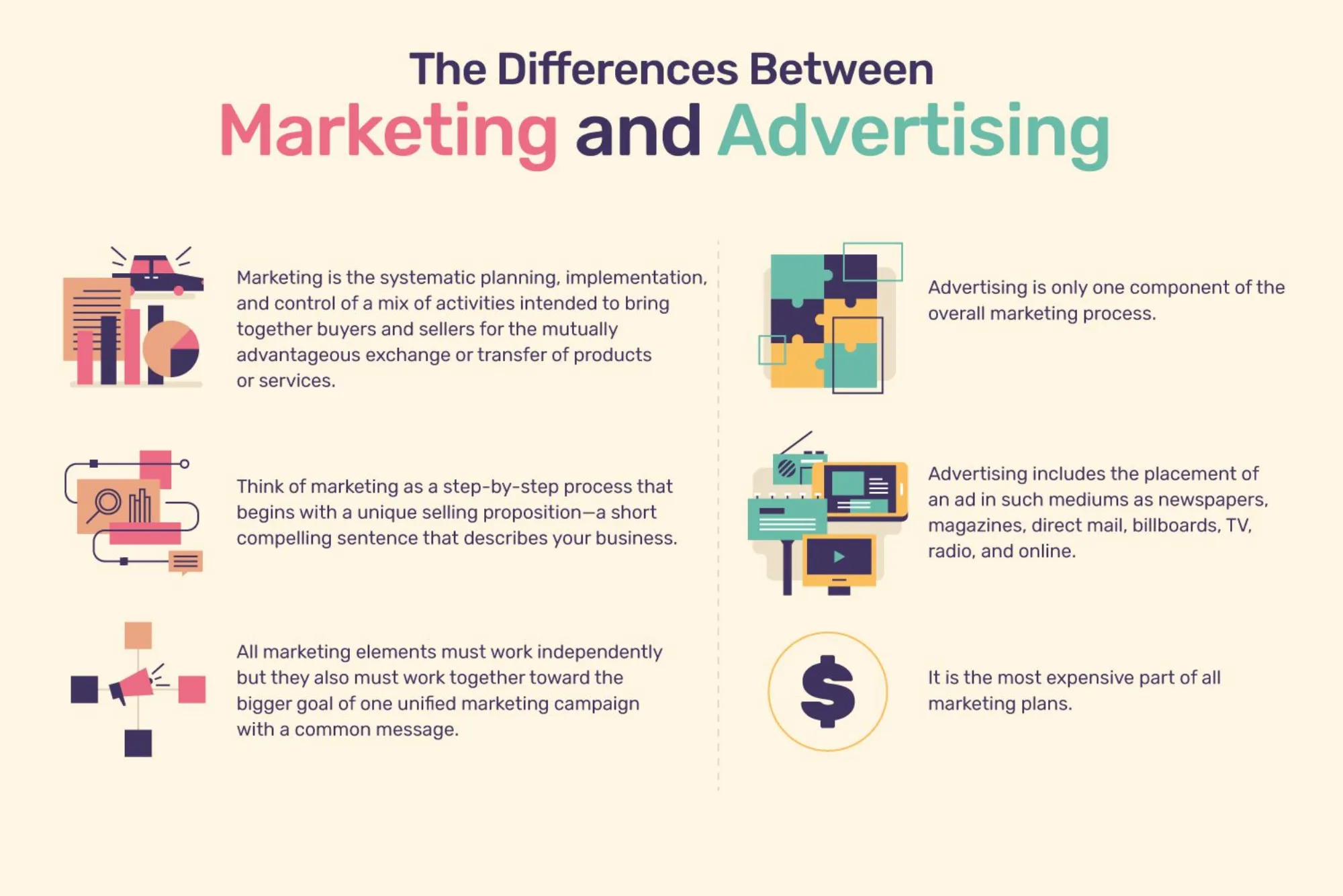In the realm of business promotion and brand awareness, the terms “marketing” and “advertising” are often used interchangeably. However, they represent distinct concepts within the broader domain of business promotion. Understanding the difference between marketing and advertising is crucial for crafting effective promotional strategies that resonate with target audiences and drive business growth. Let’s delve into the nuances of each discipline and explore how innovative advertising and marketing strategies can propel your business forward.
Marketing
Ncompasses a comprehensive set of activities aimed at promoting products or services, building brand awareness, and ultimately driving sales. It involves understanding consumer behavior, conducting market research, developing strategic plans, and implementing tactics to reach and engage target audiences. Marketing is a broader concept that encompasses various elements, including product development, pricing strategies, distribution channels, and promotional efforts.
Advertising
On the other hand, is a specific subset of marketing focused on creating and disseminating promotional messages through various channels to reach a defined audience. It involves paid communication intended to persuade or influence potential customers to take action, such as purchasing a product or service. Advertising channels can range from traditional mediums like television, radio, and print ads to digital platforms such as social media, search engines, and display advertising.
Deciphering the Dichotomy: Marketing vs. Advertising
In the realm of business strategy, distinguishing between marketing and advertising is crucial for crafting effective campaigns. Let’s explore the disparities and similarities between these two pillars of brand promotion.
Defining Marketing
Marketing encompasses a broad spectrum of activities aimed at promoting and selling products or services. It involves market research, product development, pricing, distribution, and customer satisfaction strategies.
Components of Marketing
Under the umbrella of marketing, various components synergize to create a cohesive strategy. These include market analysis, segmentation, targeting, and positioning (STP), as well as the renowned marketing mix: product, price, place, and promotion.
The Role of Advertising
Advertising is a subset of marketing focused specifically on promoting products or services through paid channels. Unlike marketing, which encompasses a broader scope of activities, advertising primarily involves creating and disseminating persuasive messages to target audiences.
Differentiating Marketing and Advertising
While marketing and advertising share the common goal of promoting products or services, they differ in scope and approach. Marketing is a comprehensive strategy that encompasses advertising as one of its components, along with other crucial elements such as market research and product development.
Collaborative Synergy
Innovative advertising and marketing strategies often intertwine to amplify brand visibility and engagement. Leveraging the strengths of both disciplines can lead to more impactful campaigns and better overall results.
The Evolution of Advertising and Marketing
With the advent of digital technology, advertising and marketing have evolved significantly. Traditional advertising mediums like print and television have been complemented by online platforms, social media, influencer marketing, and data-driven analytics.
Embracing Digital Transformation
Innovative advertising and marketing strategies harness the power of digital platforms to reach target audiences more effectively. From targeted social media ads to personalized email campaigns, digital marketing techniques offer unparalleled opportunities for engagement and conversion.
Adapting to Consumer Behavior
As consumer behavior evolves in the digital age, advertising and marketing strategies must adapt accordingly. Understanding consumer preferences and trends is essential for crafting campaigns that resonate with target audiences and drive desired outcomes.
Bridging the Gap
While marketing and advertising serve distinct purposes within the realm of brand promotion, they are intrinsically linked in driving business success. By leveraging innovative advertising and marketing strategies, businesses can create impactful campaigns that resonate with consumers and drive tangible results.







